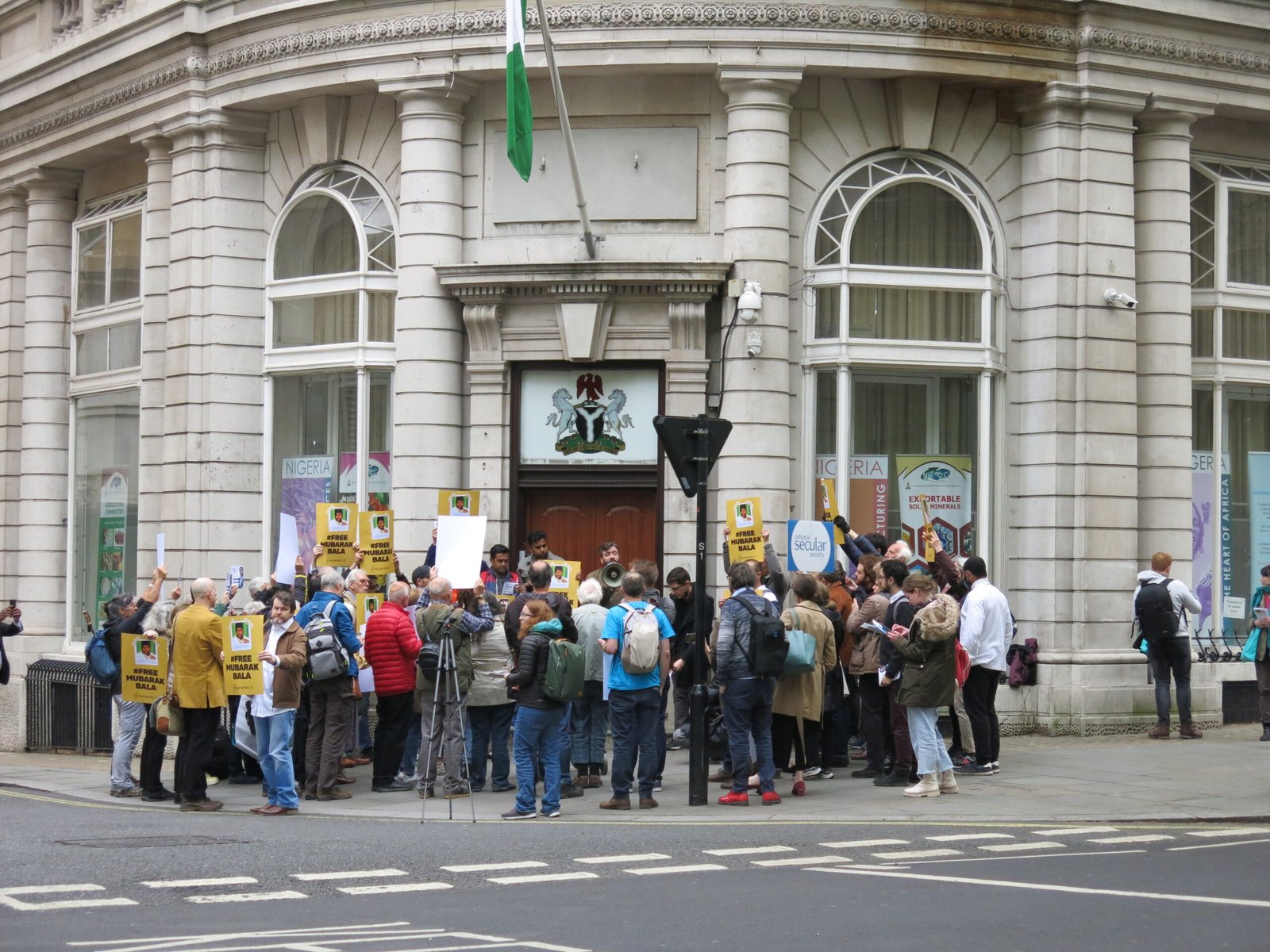There’s no doubt that we’re living through dark times, as the rise of nationalist populism sets the closest of friends and family members against each other. But we’re also seeing an interesting trend play out as well. The world of entertainment is experiencing a renaissance in the current sociopolitical environment – as artists, musicians and comedians rush to fight back against the forces of populism.
Society’s mirror
Entertainment is society’s mirror, reflecting what’s going on in the real world. And as society changes, so too does entertainment, as creatives rush to re-engage their audience. One obvious example of this fundamental truth is the 1920s and 1930s. We call it the ‘roaring 20s’ for a reason – as prosperity spread in the wake of World War One, frivolous fashions, music and films became wildly popular.

Then the Wall Street Crash of 1929 hit, sending the developed world into a tailspin, and it radically altered entertainment. The frivolous creations of the 1920s gave way to darker, moodier forms of art – most famously in the rise of the noir film genre, in the 1930s, shining a light on the darker mood of the period. The economic crisis spread poverty and political turmoil, which art then reflected.
Cultural renaissance
We can also argue that when the world grows dark, we see entertainment strive to shine a light at the end of the tunnel, causing creativity to flourish. If we reach back into history, the most obvious example of this entertainment renaissance trend is the renaissance itself. Lasting roughly from 1300 AD to 1700 AD, the renaissance was a time which saw a burst of creativity. During this period, artists such as Leonardo Da Vinci and Michelangelo painted ground-breaking masterpieces such as the Mona Lisa and the roof of the Sistine chapel, re-directing the trajectory of western art for all time.
If we look a little closer, we notice that the renaissance coincides with the reformation. This was a movement which theologians, most notably Martin Luther and John Calvin, inspired the rise of Protestantism, in a Christendom which had been Roman Catholic for centuries. The reformation caused numerous wars, along with the rise of a counter-reformation by the Catholic Church, and it is reasonable to argue that in this upheaval revolutionary ideas flourished, leading to the renaissance.

Reason and romance
One date stands out here: 1453. This was when the Ottoman Empire conquered Constantinople, putting an end to the long-standing Byzantine dominance of the Eastern-Mediterranean. As the Ottomans swept Eastern Europe, Byzantine artists and philosophers fled to the West, bringing scientific knowledge and philosophical concepts with them and inspiring the onset of the Enlightenment – a period that lasted from about 1685 to 1818, when science and reason flourished. This had its own effect on art – for example it brought the romantic literary tradition, a tradition in which writers such as William Wordsworth and Samuel Taylor Coleridge fought modernisation, by harking back to simpler times.

Give peace a chance
This phenomenon has also played out in the modern era. One example comes in the Vietnam War, which raged between 1955 and 1975. We should note that in the aftermath of the sexual liberation of World War Two, when people aimed to get close as the world fell apart around them, Western governments tried to reinforce traditional values, mostly to restrict women who had been sent to work – and found economic freedom – in the war, back to the home. This led to that most conservative of eras, the 1950s, when everything from clothes to music reflected the emergence of mid-20th Century conservatism.
The Vietnam War was more of a game-changer than you might realise. It was an incredibly unpopular fight, seen by many as the West’s attempt to reassert its dominance in an age of dying Western Imperialism. It also coincided with a new sexual revolution – it was impossible to put the genie back in the bottle, along with the rise of the civil rights era, as racial minorities and women fought to gain equal-standing in society. These factors converged to foster an explosion of creativity during this era.
The most popular band of the 1960s was the Beatles, and they serve as a key example of what was happening. I once saw a study which showed during the early 1960s, when the conservative notions of the 1950s still lingered, romance dominated their musical output. But as the Vietnam War raged, inspiring the rise of the peace-loving hippie movement, statistically the Beatles’ romantic output rapidly declined in later years, as the band chose to sing about issues such as drug culture, racism and war instead. In turn, this led to the development of politically charged genres of music – most obviously punk rock in the late 1970s, highlighting how political instability impacts and drives art.

Comedic foil
This trend has hardly been restricted to music during the immediate modern era. If we turn to comedy, we see further evidence of how a tumultuous political landscape can serve as a boon to artists. I am of course here I am talking about that most funny of Presidents, George W. Bush. Bush Jr was almost universally loathed by the political left, both for his favouring of the religious Right, and his administration’s decision to invade Iraq, and as a lot of comedians are progressive, this fired them up.
We should also remember that George Bush was often called “a gift to comedians,” and it is easy to see why. The President was known for making inaccurate statements; for instance, calling Africa a country, and this served as a boon to comedians who wanted to fight back against his administration. During his Presidency comedians such as Stephen Colbert, who famously tore Bush apart at the 2006 White House Correspondents dinner, saw renewed vigour as they attacked the occupant of the Oval Office, entertaining millions and making a political statement.

Must-see television
This comedic element of the entertainment renaissance of that time carried on through the 2008 Election, as Democrats and Republicans fought to anoint Bush’s successor. I am referring here to the Republican Vice-Presidential candidate Sarah Palin, who once said she could “see Russia” from her house in Alaska, giving her experience in International relations. Comedian Tina Fey lampooned Palin hilariously on Saturday Night Live (SNL) during the contest. Her impression was so good it scored the programme its highest ratings in years, and was rumoured to have influenced the election’s outcome.
SNL has somewhat languished in the intervening years, but Presidential elections often bring the best of it, and the 2016 election was no exception. As the divisive Donald Trump rose, SNL reacted, causing its ratings to soar once more. Alec Baldwin is a good example. A famous Liberal, Baldwin decided to fight back against Trump by doing a laugh-out-loud funny impression of him on SNL, mirroring Fey’s actions eight years earlier. Baldwin’s Trump has become the talking point of the world, serving as must-see television and showing how the dark times we are living through are driving creativity.

Just got to laugh
The impact on SNL has survived the election, as Trump’s disastrous Presidency is giving people more reasons to want to laugh than ever before. Just look at Melissa McCarthy’s side-splitting imitation of White House Secretary Sean Spicer on the show. Spicer has gained a reputation for being aggressive and dismissive – using intimidation tactics to silence critical journalists -, and in her impression, McCarthy mirrors this – for example by using her podium as weapon, showing how ludicrous Spicer really is.
But the renaissance of comedic entertainment isn’t solely linked to Trump. We are seeing a new wave of hilarious comedians, in a time when we’re still suffering from the crippling impact of the 2008 recession. John Oliver, the host of Last Week Tonight, is one of these comedians. He is known especially for doing long and extremely funny segments on important social issues ranging from predatory lending to LGBT rights, making us laugh and think in equal measure. Oliver’s most famous segment occurred when he sought to show how television evangelists are tricking religious believers into parting with their money by setting up his own tax-exempt Church – Our Lady of Perpetual Exemption, and inviting viewers to donate. They did – in droves, and just trust me, the results are absolutely bloody hilarious!

She so ain’t sorry
Just as in comedy, however, the world of music has been becoming more politicised over the past few years, further emphasising my point. Look at Beyoncé’s latest album, Lemonade. Beyoncé is a fantastic performer, but she’s been known for playing it safe in the past, choosing often to sing about love and sex instead of real social issues. But did you know that Beyoncé and her husband Jay Z have been financially contributing to Black Lives Matter – a movement which grew up to fight against racial inequality in the US in 2014, and this caused the singer to radically change the nature of her output.
Don’t get me wrong – love was a major theme on Lemonade. Songs such as ‘Hold Up,’ and ‘Sorry’ were rumoured to have been inspired by cheating on the part of her husband. But these tunes, as well as the accompanying visual for the album, were draped in references to black female empowerment, something Beyoncé has never embraced quite so strongly in the past. Also, Lemonade tunes such as ‘Freedom’ and ‘Formation’ were far more overt, and the former made a direct reference to Black Lives Matter, showing that in these dark times, singers are feeling the need to address social issues.

Join the resistance
Let’s not forget that the election of the Donald is seeing the rise of an entire anti-Trump genre of music, according to Time Magazine. Some of these tunes include Katy Perry’s ‘Chained to the Rhythm’ which she famously performed as a protest song to air dissatisfaction with Trump and Brexit at the 2017 Brits, showcasing ghoulish puppets of the President and UK Prime Minister Theresa May. Another example is ‘Locker Room Talk’ by the Cold Kids. Musicians are making their feelings on Trump and his exploits very clear.
As a form of entertainment, music holds a special place in our culture. Across the history of modern pop music, from John Lennon’s anti-war 1969 track ‘Give Peace a Chance’ to Lady Gaga’s 2011 ode to acceptance in a world which gradually came to terms with LGBT rights, ‘Born This Way,’ this art-form has often changed the societal conversation on serious issues. It is obvious that musicians such as Perry are hoping to harness the power of music once again in the age of Trump to fight back against his brand of nationalism, leading to the amazing boost in musical output we’re seeing.

Truth and fiction
Artists are also reacting to the current climate, by creating innovative pieces. Did you see that during the 2016 US election, LA-based artist Plastic Jesus built a miniature wall around Donald Trump’s star on the Hollywood Walk of Fame, protesting his idea to build a wall on the US/Mexico border? Meanwhile, earlier this year artists projected the text of the ‘emoluments clause’ of the US constitution, which forbids US Presidents from accepting gifts from foreign powers, onto a Trump Hotel in Washington D.C., to protest the President’s allegedly corrupt international business practises.
These artistic creations were inspiring, serving as intelligent rebukes of the ‘Trump doctrine,’ without going overboard – but we’ve seen some people take it a bit too far. You know what I’m talking about. US comedian Kathy Griffin suffered a major backlash recently when she was pictured holding a mock ‘severed head’ of Donald Trump on the cover of a magazine. Even when it’s Donald Trump, implying that a President should be killed – even jokingly – is too much for most Americans. Griffin offended people so deeply that she was fired by CNN – who she does a New Year’s show for, but the fact she went so far highlights how politics is shaping entertainment and especially art right now.

Back to the past
We’re seeing something fascinating happen in literature as well. Unlike with art, comedy or music, the impact of an unstable political environment does not become apparent in literature right away, as it takes more time to write and release a book. In the absence of books which cover issues such as Trump and Brexit, people are turning back to old classics as a form of entertainment in this dark time.
This is leading to a rising resurgence, for instance, in the popularity of George Orwell’s dystopic novel 1984. Written in 1949, the book was designed to warn the public against authoritarian communism, which was coming to the fore in many parts of the world at that time. It saw a huge bump in sales, The Telegraph writes, after Counsellor to Donald Trump Kellyanne Conway used the term ‘alternative facts,’ to support some of the controversial actions the President has taken. ‘Alternative facts’ reminded people of some of the contradictory phrases used in 1984, such as ‘Ministry of Truth’ – a place where propaganda is created, leading to renewed interest in this modern literary classic.

Entertainment renaissance
It’s fair to say that entertainment has always been inspired by the real world – especially the political sphere. But when things get scary, entertainment gets exciting, as creatives are inspired to speak out against what’s happening in the world to make things better. In my humble opinion, things are getting pretty scary at the moment, particularly with Donald Trump single-handedly taking a wrecking ball to Western diplomacy, and this entertainment renaissance is just the counterbalance we need right now. Whether it’ll inspire real change in the way our world works, however, remains to be seen.







Article Discussion